Chances are you've seen golden barrel cactus in professionally designed succulent gardens, but you've hesitated to add it to yours. Here's why you should, and how to keep the plants happy. But first a reassurance: Yes it's spiny, but the spines curve downward. IMHO, its plusses far outweigh any minuses.

My neighbor Elisabeth Crouch demonstrates how to hold a barrel cactus: Wear tough garden gloves, grasp it by its roots, and cushion the plant with a folded newspaper.
Golden barrels take a garden from mundane to amazing. Here's why.
- Texture. From a distance they look like fuzzy balls. Up close they look spiky. Either way they're an intriguing contrast to nearby foliage.
- Shape. I'm betting no other plants in your garden are spherical. Ball-shaped cacti show to advantage in groupings or S-curves.
- Interest. A solo barrel serves as a focal point. More than one suggests rolling terrain.
- Color. Their sunny yellow stands out and repeats that of other shrubs and succulents.
- Light. When backlit by early morning or late afternoon sun, translucent spines glow.

Golden barrels and silver swords (Cleistocactus strausii) light up a backyard. Squint at the photo and imagine it without them. Doesn't look like much, does it?
Browse my Gallery of Golden Barrels in Gardens and Landscapes below.
See my video: Why a Succulent Garden Needs Golden Barrels (1:35) Jeanne Meadow tells why she's glad her landscape architect talked her into golden barrels. She now has 30+ in her famed Southern CA succulent garden.
About golden barrel cactus
In the wild, Echinocactus grusonii grows on rocky, volcanic slopes at 4600 feet in the Mexican state of Hidalgo. It's rare and endangered due to over-harvesting and from the building of a reservoir that destroyed much of its habitat.
Barrels lean in the direction of greatest light. This is most noticeable in older specimens, which become cylindrical over time. Spines and ribs help shade and protect the plant's thin green skin. Btw, the term "barrel cactus" applies to other rotund genera, primarily Ferocactus.

Barrels at the Huntington Botanical Gardens lean slightly to the southwest. "Throughout the garden are more than 500 specimens of golden barrel cactus," says the guidebook Desert Plants of the Huntington Botanical Garden, by curator Gary Lyons. "...the largest specimens were grown from seed in the early 1920s and planted in 1929."
It takes about 30 years for barrels to reach maturity (3-1/2 feet in diameter with 35 ribs). Clusters will of course fill more space. Specimens at the Huntington Botanical Gardens are immense due to great age (50+ years).
See my video: How Old is that Barrel Cactus? (2:03) I harvest seeds from a 35-year-old specimen and show how the plants change as they age.
Golden barrels usually don't flower until they're about 14 inches across, so at a rate of about an inch per year, it'll take 14 years or more. In spring, satiny yellow flowers form a whorl around the plant's wooly crown.

Barrel cactus flowers suggest Reese's Pieces.
Crisp dry petals hide fruit imbedded in the wool. The fruit dries into seed pods that are easily wiggled loose. When pulled out, cottony tufts cling to them.
How to grow golden barrels
The plants are well suited to warm, dry, sunny areas of southern and coastal CA from the Bay Area south, northern Mexico, and (given some shade) Arizona, New Mexico and southern Texas.
Sun exposure: Give full sun in all but desert climates. The more sun, the darker gold the spines. When transplanting, give a barrel the same orientation to the sun as it had previously, or its skin may burn (mark the pot).
Temperature: Golden barrels prefer average minimum temperatures in the low 50s F, but can tolerate 15 F for brief periods.
Location: Don't plant any cactus where it'll encroach on steps or walkways, or areas children or dogs play. Place barrels on a slight slope to enhance drainage but not on an incline so steep that their weight may cause them to tumble. Set atop mounded soil with thirstier plants lower. Avoid planting under trees; leaf litter is difficult to remove.

Golden barrel cactus, well away from a walkway, grows in a lava-rock terrace.
Plan ahead: It's best if, once planted, golden barrels stay put. By the time a specimen is 2 feet across, it weighs well over 100 lbs.
Water: Like many cacti, barrels like an occasional deep soaking during hot, dry summer months. This helps them grow faster, but without it they'll survive on stored moisture. Water at the base with a hose or drip irrigation.
Soil: Use a coarse, fast-draining mix of 20 to 40 percent organic compost and 80 to 60 percent decomposed granite sand or crushed lava rock.

With one hand he'll lift and carry the plant by the hose he's cinched around it, and with the other he'll use the shovel to balance and steady it.
Digging and transplanting: Elevate the plant's shallow roots with a shovel then use an old, soft garden hose to lasso and carry it so you don't break its spines. At its new location, gently secure the plant atop a shallow basin. Wait two weeks to water a newly planted barrel. Roots, which break easily and may be crushed by the weight of the plant, need time to heal.
Troubleshooting: If barrels get wet and cold they may rot. Don't plant one where rainwater collects. [See my video: Why Succulents Rot and How to Prevent It (2:02).] Barrels are not prone to pests, but gophers may occasionally eat all the way up into the core of the plant.
Weeding: Use long tweezers to remove weeds. [See my video: How to Weed a Spiky Succulent (2:59).] Before winter rains, apply an environmentally friendly pre-emergent herbicide to the ground around the plants to prevent weed seeds from germinating.
Propagation by offsets
To stimulate a barrel cactus to produce offsets, take a nail that's 3 or 4 inches long, hold it with pliers, heat it over a flame, and push it into a growing point (where spines emerge) to half the nail's length, and then remove it. Or use a power drill to core the plant. [See how it's done in my video, Succulent Propagation by Coring (4:01).]

Having its core destroyed by a gopher stimulated this barrel cactus to produce offsets.
To remove an offset, grasp it with rubber-tipped tongs and gently twist. Wait a few days until the raw end is dry and hard, then nestle the baby plant in coarse, well-draining soil.
Where to buy golden barrels

Golden barrel with offset at Desert Theater nursery north of San Diego
Many succulent nurseries in Southern CA carry golden barrels in one-gallon pots and larger or can order them for you. Obtain smaller specimens online via Amazon and Mountain Crest Gardens.
Golden barrels in gardens and landscapes
Barrels are dramatic and draw the eye, so know the look you want before planting. Repeat them to lend design continuity to a garden. For a natural look, don't place barrels equidistant from each other or line them up in rows. On the other hand, deliberately creating a pattern with them can be striking.
For a modern, minimalist effect, surround barrels with rocks. It's fine to combine them with soft-leaved succulents, but keep in mind such floral-style plantings are temporary. The barrels will be there long after the sedum, echeverias or senecios have become tired, overgrown and need replacing.
The post Why Your Garden Needs Golden Barrels appeared first on Debra Lee Baldwin. Copyright © Debra Lee Baldwin.
from Debra Lee Baldwin http://bit.ly/2HZy50c
via IFTTT



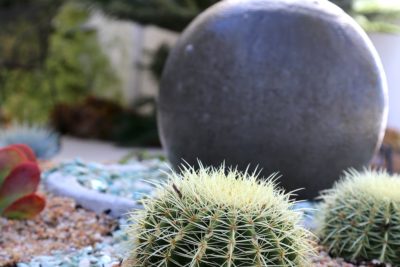
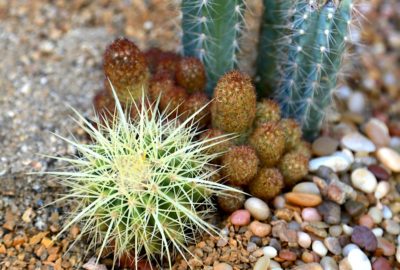
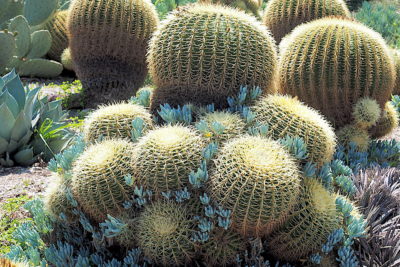
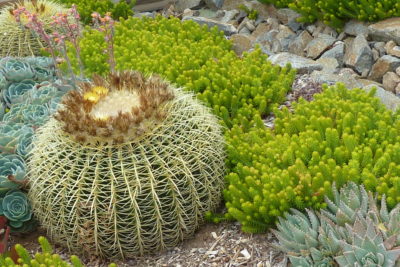
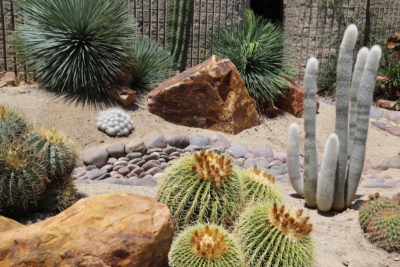
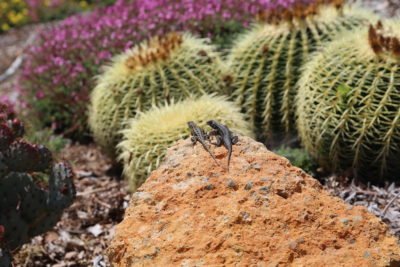
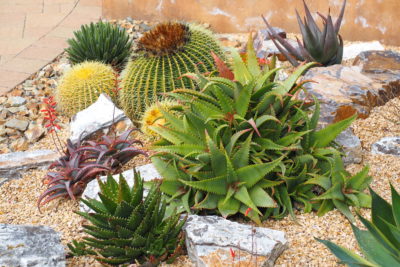

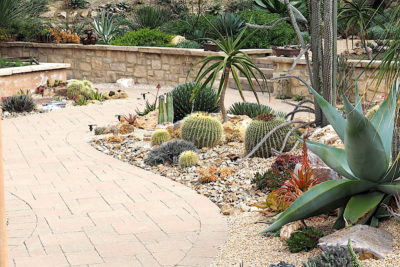
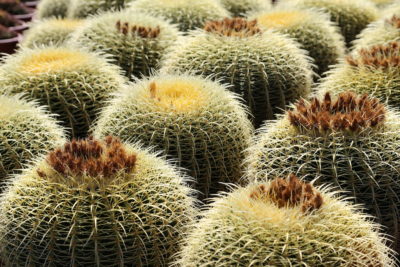
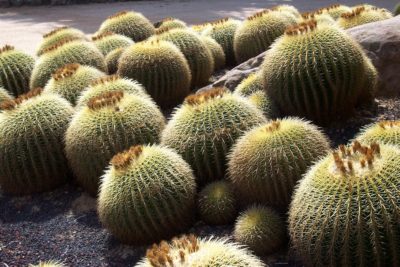
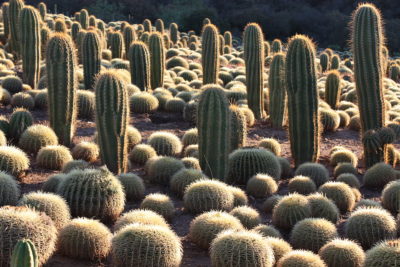
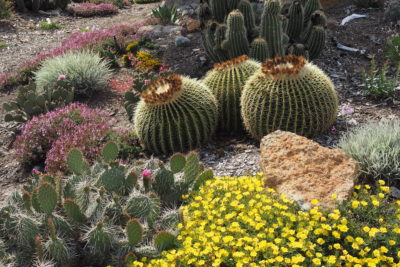
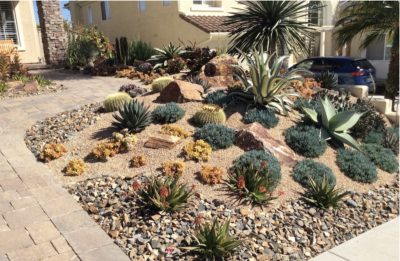
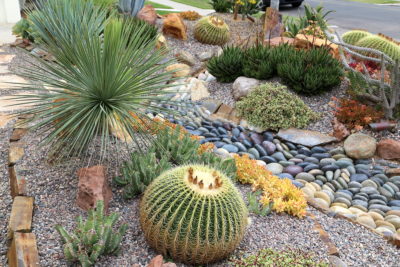
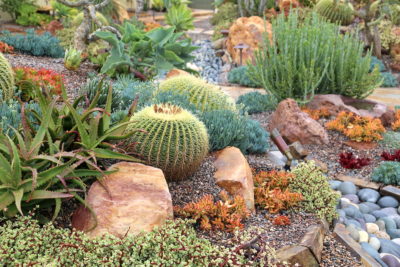
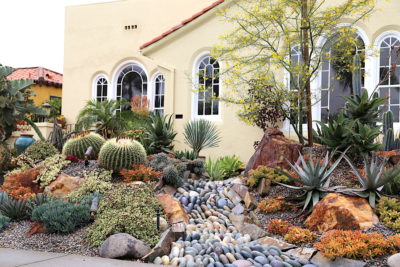
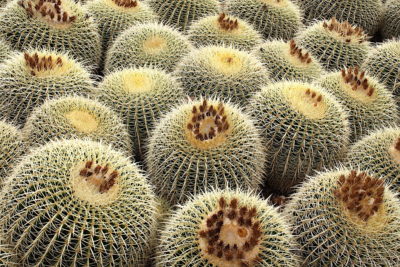


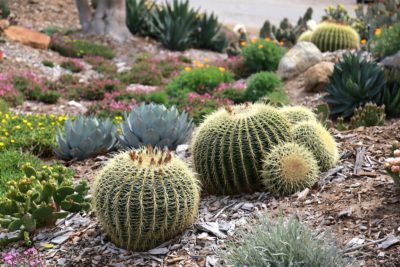
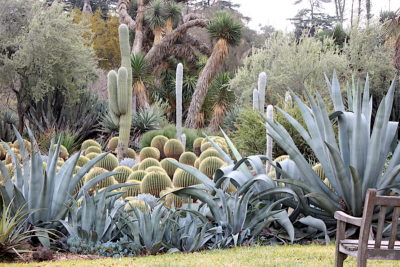
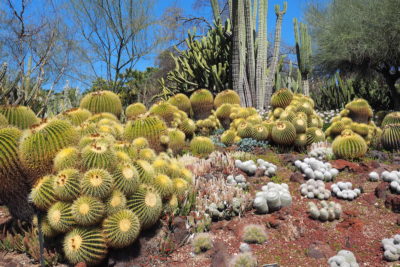
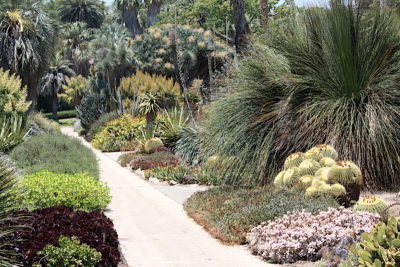
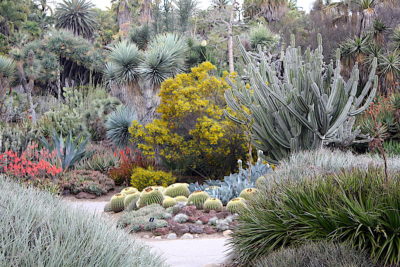
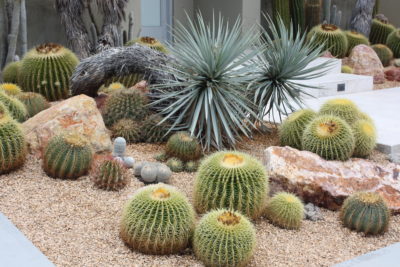
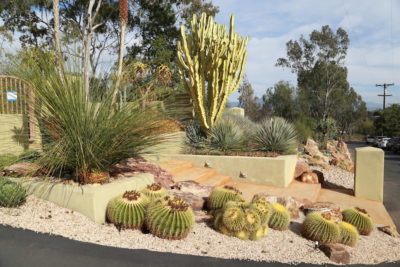
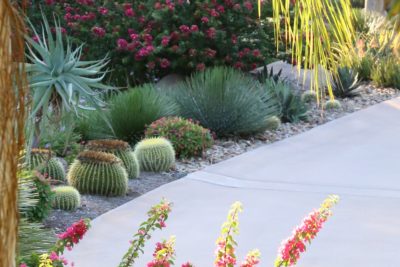
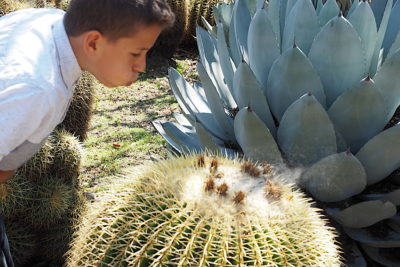
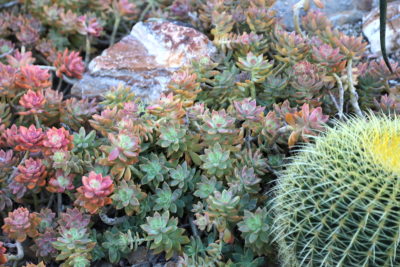

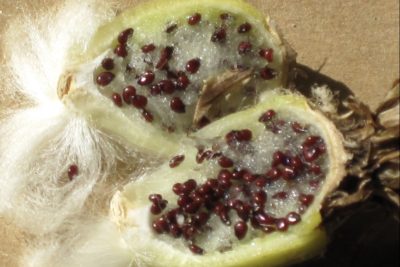



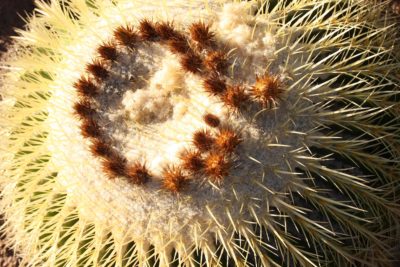
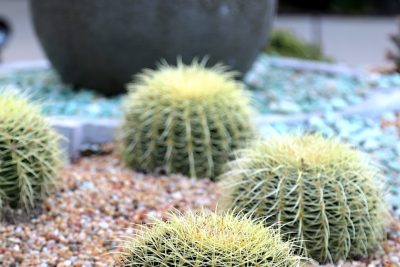
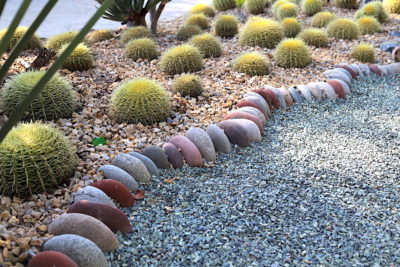
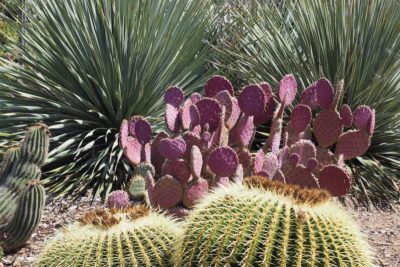

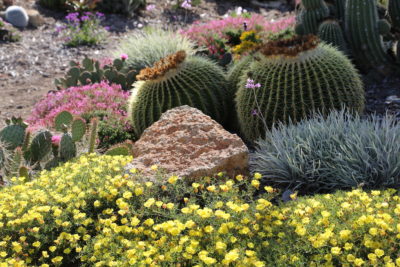

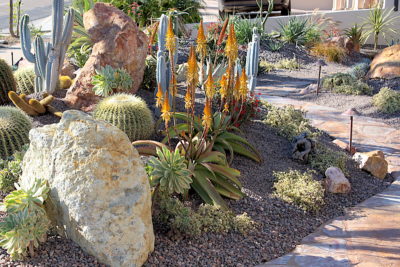

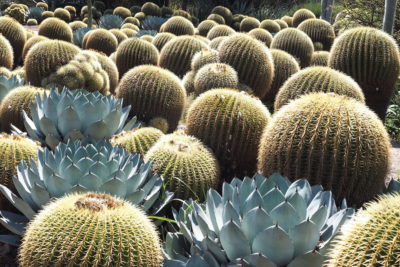
No hay comentarios:
Publicar un comentario